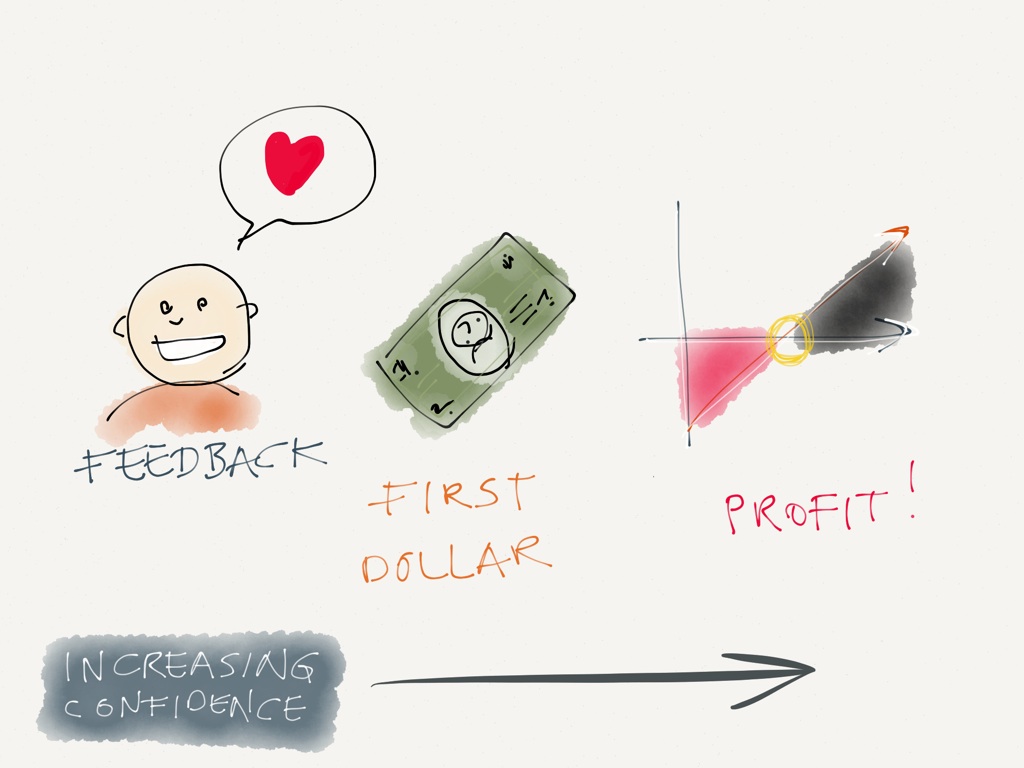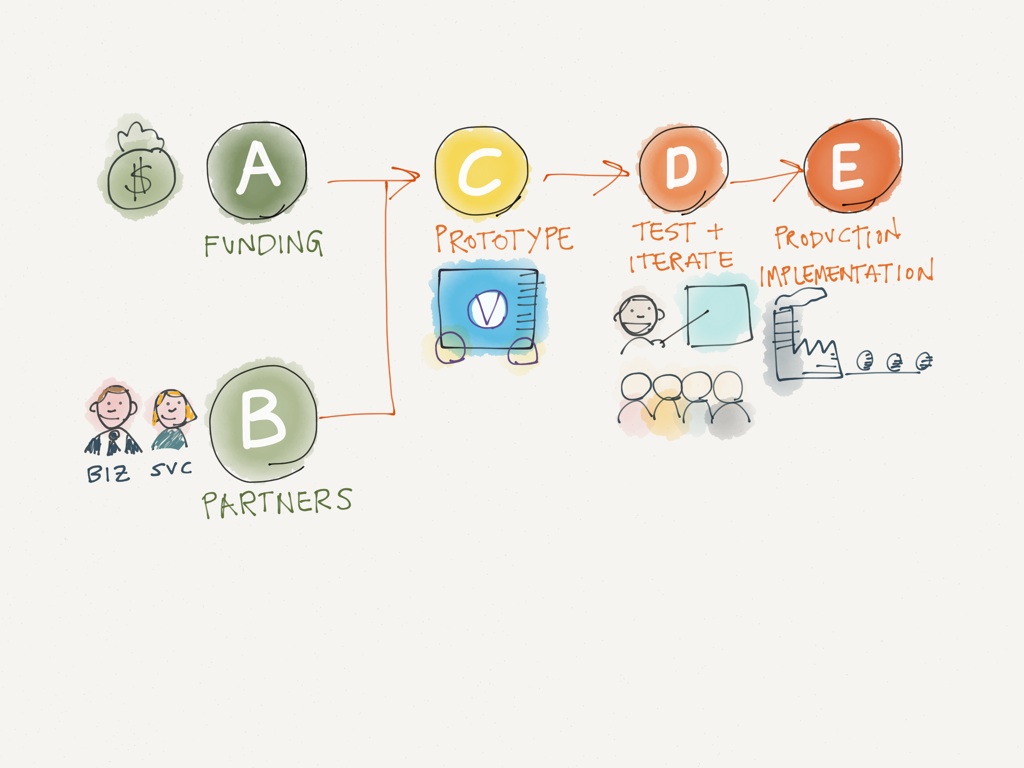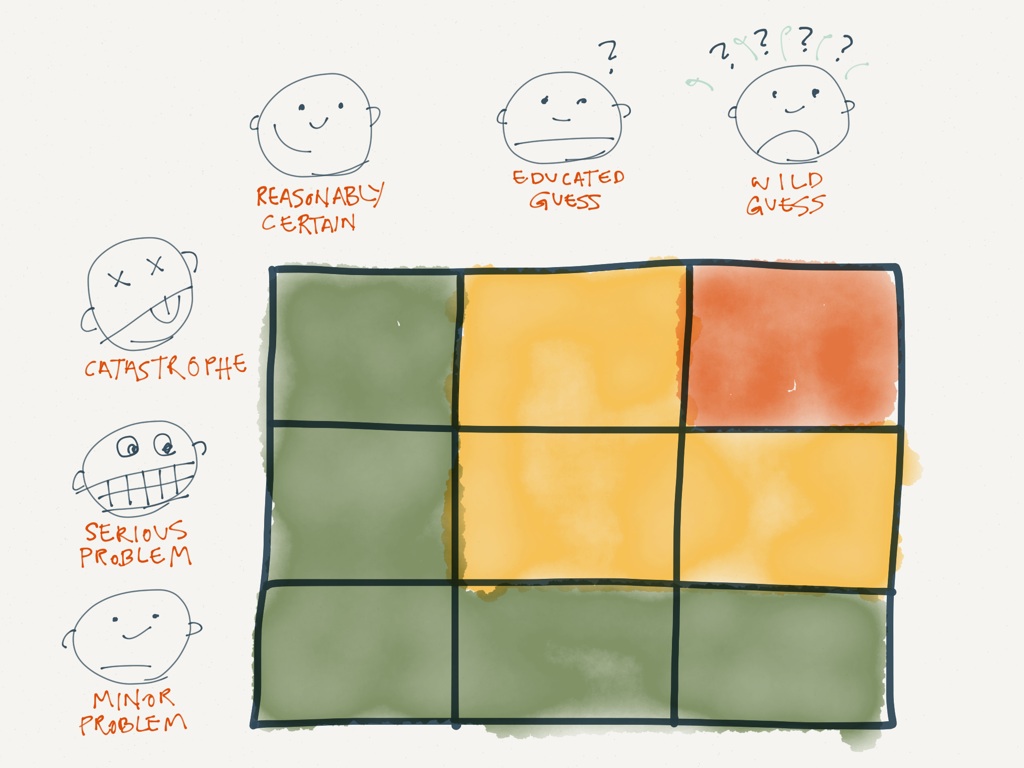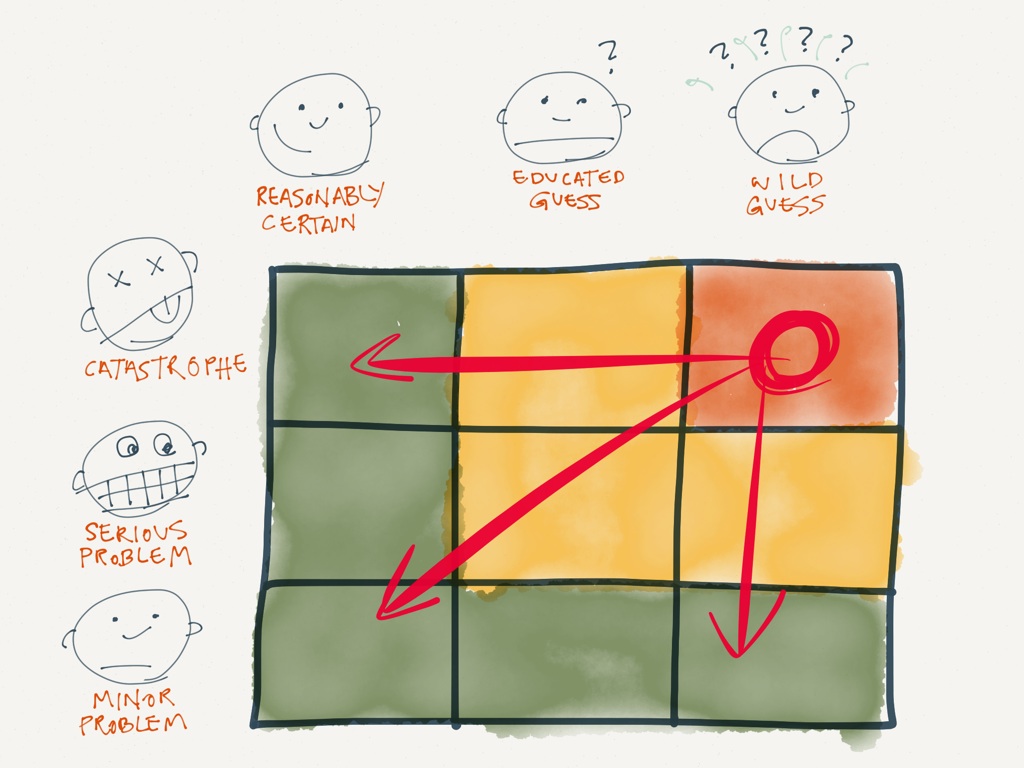We love Vijay Govindarajan and Chris Trimble's Other Side of Innovation, specifically the second half of the book. For anyone who has ever resented being asked to write a business plan, Govindarajan and Trimble's book will at last explain the profound difference between planning and prediction.
Consider that at the moment you decide to explore a new product, you will never be dumber about your customer, their needs and your opportunity. The big idea in Other Side of Innovation is how to manage product development as a "disciplined experiment." Applying the scientific method to design thinking involves establishing a “hypothesis of record.” This tool helps the product manager answer their two most important questions: what are we spending money on, and why?
To build a hypothesis of record, the team must first create a "cause and effect" diagram, a simple flowchart of the steps necessary to reach the ultimate objective (in DtM’s case, saving millions of lives in poor countries). The team then identifies the most critical assumptions embedded in the plan, stated in a way that meets Karl Popper's standard for "falsifiability.” The team then defines a set of experiments that will test those key assumptions as quickly and cheaply as possible. When an experiment proves a key assumption false, you know it's time to update your hypothesis of record.
Every design firm brags about “failing as fast as possible.” Govindarajan and Trimble's book explains how to do it with rigor. This approach has become the basis for all of DtM's strategic planning. Check it out! And if you buy the book through the links in this email, Amazon will send part of the proceeds to DtM! [Other Side of Innovation]






